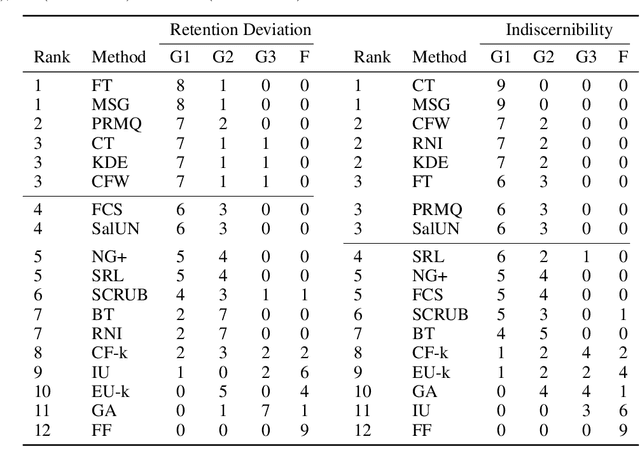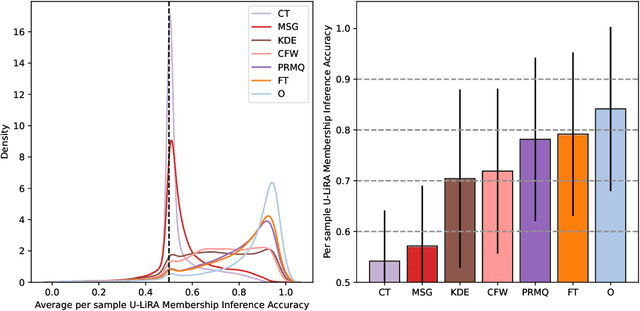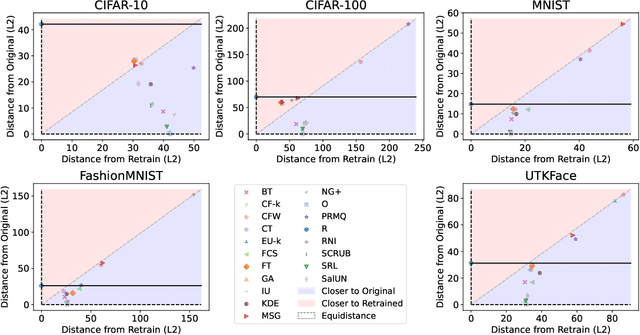Hamed Haddadi
Imperial College London
Poster: Enhancing GNN Robustness for Network Intrusion Detection via Agent-based Analysis
Jun 25, 2025Abstract:Graph Neural Networks (GNNs) show great promise for Network Intrusion Detection Systems (NIDS), particularly in IoT environments, but suffer performance degradation due to distribution drift and lack robustness against realistic adversarial attacks. Current robustness evaluations often rely on unrealistic synthetic perturbations and lack demonstrations on systematic analysis of different kinds of adversarial attack, which encompass both black-box and white-box scenarios. This work proposes a novel approach to enhance GNN robustness and generalization by employing Large Language Models (LLMs) in an agentic pipeline as simulated cybersecurity expert agents. These agents scrutinize graph structures derived from network flow data, identifying and potentially mitigating suspicious or adversarially perturbed elements before GNN processing. Our experiments, using a framework designed for realistic evaluation and testing with a variety of adversarial attacks including a dataset collected from physical testbed experiments, demonstrate that integrating LLM analysis can significantly improve the resilience of GNN-based NIDS against challenges, showcasing the potential of LLM agent as a complementary layer in intrusion detection architectures.
Energy-Aware Deep Learning on Resource-Constrained Hardware
May 18, 2025Abstract:The use of deep learning (DL) on Internet of Things (IoT) and mobile devices offers numerous advantages over cloud-based processing. However, such devices face substantial energy constraints to prolong battery-life, or may even operate intermittently via energy-harvesting. Consequently, \textit{energy-aware} approaches for optimizing DL inference and training on such resource-constrained devices have garnered recent interest. We present an overview of such approaches, outlining their methodologies, implications for energy consumption and system-level efficiency, and their limitations in terms of supported network types, hardware platforms, and application scenarios. We hope our review offers a clear synthesis of the evolving energy-aware DL landscape and serves as a foundation for future research in energy-constrained computing.
TeleSparse: Practical Privacy-Preserving Verification of Deep Neural Networks
Apr 27, 2025Abstract:Verification of the integrity of deep learning inference is crucial for understanding whether a model is being applied correctly. However, such verification typically requires access to model weights and (potentially sensitive or private) training data. So-called Zero-knowledge Succinct Non-Interactive Arguments of Knowledge (ZK-SNARKs) would appear to provide the capability to verify model inference without access to such sensitive data. However, applying ZK-SNARKs to modern neural networks, such as transformers and large vision models, introduces significant computational overhead. We present TeleSparse, a ZK-friendly post-processing mechanisms to produce practical solutions to this problem. TeleSparse tackles two fundamental challenges inherent in applying ZK-SNARKs to modern neural networks: (1) Reducing circuit constraints: Over-parameterized models result in numerous constraints for ZK-SNARK verification, driving up memory and proof generation costs. We address this by applying sparsification to neural network models, enhancing proof efficiency without compromising accuracy or security. (2) Minimizing the size of lookup tables required for non-linear functions, by optimizing activation ranges through neural teleportation, a novel adaptation for narrowing activation functions' range. TeleSparse reduces prover memory usage by 67% and proof generation time by 46% on the same model, with an accuracy trade-off of approximately 1%. We implement our framework using the Halo2 proving system and demonstrate its effectiveness across multiple architectures (Vision-transformer, ResNet, MobileNet) and datasets (ImageNet,CIFAR-10,CIFAR-100). This work opens new directions for ZK-friendly model design, moving toward scalable, resource-efficient verifiable deep learning.
NoEsis: Differentially Private Knowledge Transfer in Modular LLM Adaptation
Apr 25, 2025Abstract:Large Language Models (LLM) are typically trained on vast amounts of data from various sources. Even when designed modularly (e.g., Mixture-of-Experts), LLMs can leak privacy on their sources. Conversely, training such models in isolation arguably prohibits generalization. To this end, we propose a framework, NoEsis, which builds upon the desired properties of modularity, privacy, and knowledge transfer. NoEsis integrates differential privacy with a hybrid two-staged parameter-efficient fine-tuning that combines domain-specific low-rank adapters, acting as experts, with common prompt tokens, acting as a knowledge-sharing backbone. Results from our evaluation on CodeXGLUE showcase that NoEsis can achieve provable privacy guarantees with tangible knowledge transfer across domains, and empirically show protection against Membership Inference Attacks. Finally, on code completion tasks, NoEsis bridges at least 77% of the accuracy gap between the non-shared and the non-private baseline.
* ICLR 2025 MCDC workshop
Intelligent Detection of Non-Essential IoT Traffic on the Home Gateway
Apr 22, 2025Abstract:The rapid expansion of Internet of Things (IoT) devices, particularly in smart home environments, has introduced considerable security and privacy concerns due to their persistent connectivity and interaction with cloud services. Despite advancements in IoT security, effective privacy measures remain uncovered, with existing solutions often relying on cloud-based threat detection that exposes sensitive data or outdated allow-lists that inadequately restrict non-essential network traffic. This work presents ML-IoTrim, a system for detecting and mitigating non-essential IoT traffic (i.e., not influencing the device operations) by analyzing network behavior at the edge, leveraging Machine Learning to classify network destinations. Our approach includes building a labeled dataset based on IoT device behavior and employing a feature-extraction pipeline to enable a binary classification of essential vs. non-essential network destinations. We test our framework in a consumer smart home setup with IoT devices from five categories, demonstrating that the model can accurately identify and block non-essential traffic, including previously unseen destinations, without relying on traditional allow-lists. We implement our solution on a home access point, showing the framework has strong potential for scalable deployment, supporting near-real-time traffic classification in large-scale IoT environments with hundreds of devices. This research advances privacy-aware traffic control in smart homes, paving the way for future developments in IoT device privacy.
Robust Hallucination Detection in LLMs via Adaptive Token Selection
Apr 10, 2025Abstract:Hallucinations in large language models (LLMs) pose significant safety concerns that impede their broader deployment. Recent research in hallucination detection has demonstrated that LLMs' internal representations contain truthfulness hints, which can be harnessed for detector training. However, the performance of these detectors is heavily dependent on the internal representations of predetermined tokens, fluctuating considerably when working on free-form generations with varying lengths and sparse distributions of hallucinated entities. To address this, we propose HaMI, a novel approach that enables robust detection of hallucinations through adaptive selection and learning of critical tokens that are most indicative of hallucinations. We achieve this robustness by an innovative formulation of the Hallucination detection task as Multiple Instance (HaMI) learning over token-level representations within a sequence, thereby facilitating a joint optimisation of token selection and hallucination detection on generation sequences of diverse forms. Comprehensive experimental results on four hallucination benchmarks show that HaMI significantly outperforms existing state-of-the-art approaches.
Benchmarking Ultra-Low-Power $μ$NPUs
Mar 28, 2025Abstract:Efficient on-device neural network (NN) inference has various advantages over cloud-based processing, including predictable latency, enhanced privacy, greater reliability, and reduced operating costs for vendors. This has sparked the recent rapid development of microcontroller-scale NN accelerators, often referred to as neural processing units ($\mu$NPUs), designed specifically for ultra-low-power applications. In this paper we present the first comparative evaluation of a number of commercially-available $\mu$NPUs, as well as the first independent benchmarks for several of these platforms. We develop and open-source a model compilation framework to enable consistent benchmarking of quantized models across diverse $\mu$NPU hardware. Our benchmark targets end-to-end performance and includes model inference latency, power consumption, and memory overhead, alongside other factors. The resulting analysis uncovers both expected performance trends as well as surprising disparities between hardware specifications and actual performance, including $\mu$NPUs exhibiting unexpected scaling behaviors with increasing model complexity. Our framework provides a foundation for further evaluation of $\mu$NPU platforms alongside valuable insights for both hardware designers and software developers in this rapidly evolving space.
Deep Unlearn: Benchmarking Machine Unlearning
Oct 02, 2024



Abstract:Machine unlearning (MU) aims to remove the influence of particular data points from the learnable parameters of a trained machine learning model. This is a crucial capability in light of data privacy requirements, trustworthiness, and safety in deployed models. MU is particularly challenging for deep neural networks (DNNs), such as convolutional nets or vision transformers, as such DNNs tend to memorize a notable portion of their training dataset. Nevertheless, the community lacks a rigorous and multifaceted study that looks into the success of MU methods for DNNs. In this paper, we investigate 18 state-of-the-art MU methods across various benchmark datasets and models, with each evaluation conducted over 10 different initializations, a comprehensive evaluation involving MU over 100K models. We show that, with the proper hyperparameters, Masked Small Gradients (MSG) and Convolution Transpose (CT), consistently perform better in terms of model accuracy and run-time efficiency across different models, datasets, and initializations, assessed by population-based membership inference attacks (MIA) and per-sample unlearning likelihood ratio attacks (U-LiRA). Furthermore, our benchmark highlights the fact that comparing a MU method only with commonly used baselines, such as Gradient Ascent (GA) or Successive Random Relabeling (SRL), is inadequate, and we need better baselines like Negative Gradient Plus (NG+) with proper hyperparameter selection.
Terracorder: Sense Long and Prosper
Aug 05, 2024Abstract:In-situ sensing devices need to be deployed in remote environments for long periods of time; minimizing their power consumption is vital for maximising both their operational lifetime and coverage. We introduce Terracorder -- a versatile multi-sensor device -- and showcase its exceptionally low power consumption using an on-device reinforcement learning scheduler. We prototype a unique device setup for biodiversity monitoring and compare its battery life using our scheduler against a number of fixed schedules; the scheduler captures more than 80% of events at less than 50% of the number of activations of the best-performing fixed schedule. We then explore how a collaborative scheduler can maximise the useful operation of a network of devices, improving overall network power consumption and robustness.
P4: Towards private, personalized, and Peer-to-Peer learning
May 27, 2024Abstract:Personalized learning is a proposed approach to address the problem of data heterogeneity in collaborative machine learning. In a decentralized setting, the two main challenges of personalization are client clustering and data privacy. In this paper, we address these challenges by developing P4 (Personalized Private Peer-to-Peer) a method that ensures that each client receives a personalized model while maintaining differential privacy guarantee of each client's local dataset during and after the training. Our approach includes the design of a lightweight algorithm to identify similar clients and group them in a private, peer-to-peer (P2P) manner. Once grouped, we develop differentially-private knowledge distillation for clients to co-train with minimal impact on accuracy. We evaluate our proposed method on three benchmark datasets (FEMNIST or Federated EMNIST, CIFAR-10 and CIFAR-100) and two different neural network architectures (Linear and CNN-based networks) across a range of privacy parameters. The results demonstrate the potential of P4, as it outperforms the state-of-the-art of differential private P2P by up to 40 percent in terms of accuracy. We also show the practicality of P4 by implementing it on resource constrained devices, and validating that it has minimal overhead, e.g., about 7 seconds to run collaborative training between two clients.
 Add to Chrome
Add to Chrome Add to Firefox
Add to Firefox Add to Edge
Add to Edge